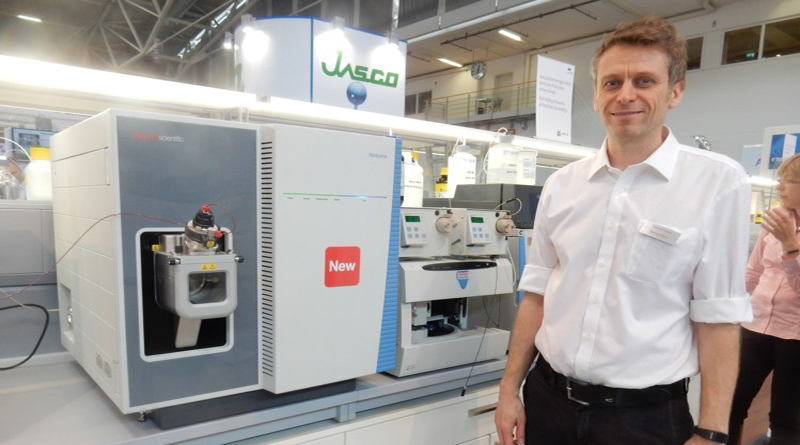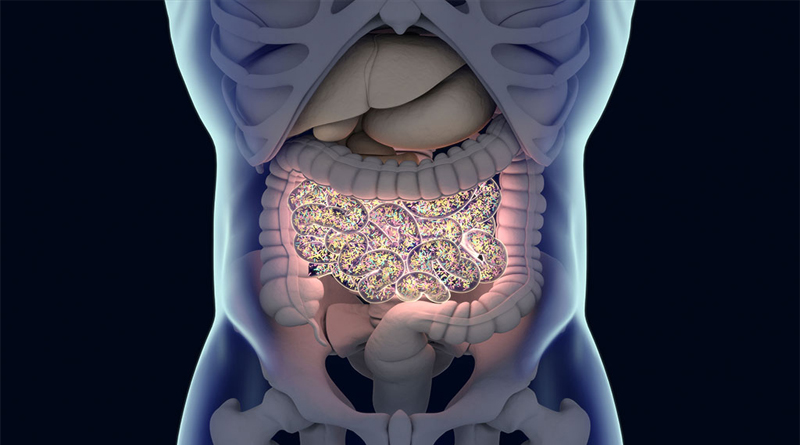Method development for pesticides and packaging migration are two current areas of high interest, according to Thermo Fisher Scientific.
Laszlo Hollosi, application specialist, spoke to us after giving a demonstration at the Live Lab on Food Analysis at Analytica 2018.
Pesticide analysis is well established and most methods are not new, said Hollosi.
Demand to analyse more compounds
“The conventional Quick Easy Cheap Effective Rugged Safe (QuEChERS) extraction methods are well known but more and more compounds need to be analysed in the laboratories.
“So in the past it was a few hundred, now the request is to do nearly everything which would mean 600 to 1,000 compounds at the same time and it is clear the classical QuEChERS is not suitable for making a proper sample preparation for all these compounds at the same time. So there is continuous development on the sample extraction side with some modification of QuEChERS.”
However, the market demand is for fast turnaround and not to waste time.
“They do not want to do 200 with this extraction method and the other 500 with another one. They want to have more powerful and selective instruments for that,” said Hollosi.
“It can be for the chromatography side with new specific columns or applications like online sample preparation and combine two-dimensional methods.
“Also on the detection side where we have very selective detectors like the high-resolution mass spectrometry portfolio and different models which are powerful enough to measure 700 pesticides at the same time in the sample but it must be affordable for the routine labs. If you have a detector like this you don’t need a specific sample preparation method in front of the analysis.
“The direction is the dilute and shoot technique, everybody tries to go for this for the simple and easy methods but you need powerful instruments.”
Screening and quantifying
Hollosi said some people want just to screen and others to quantify.
“For the known compounds, which for pesticides is around 1,000 but is changing as new ones come in, they can screen for these compounds at the same time but if there is a suspect they can quantify,” he said.
“On the other hand, if the screening is more important, they dilute and shoot a dirty sample and they get an idea of 30-40 candidates they’d like to investigate more in detail these compounds. The identification of the new ones and metabolites of pesticides is of more interest, these compounds are not well known up to now.”
The food industry is missing an opportunity with the lack of online sample preparation, said Hollosi.
“It has clear advantages against the manual and classical methods in terms of reproducibility, repeatability, method transfer and measuring time and cost efficiency,” he said.
“These methods are well established in clinical so I don’t understand why it is not widespread in this field. The problem of variety of different compounds can be eliminated because systems can be on different channels where different methods can be set up and with a switch we can turn from one system to the next and use the same detector for the analysis.”
Packaging migration and leaching
Thermo Scientific said what is leaching out of packaging materials and migrating into food is a broad and difficult topic.
Hollosi said the problem starts with not knowing what to look for and what is relevant among thousands of compounds.
“First of all the identification is difficult, not from the instrumental side because the instrument will record everything, but the need to read out the information. We need to find the relevant compounds, differentiate between the background and there must be some model media for this,” he said.
“Different foodstuff is packed in different packaging materials so the migration from the same packaging material into different matrixes like liquid, fish or dry food is completely different.
“First of all a model has to be set that mimics the migration. It is difficult to find one, now there are some matrixes defined so we work on those. For evaluation of data the best solution is to use the appropriate software because it is the only way we can go and identify the compounds.”
Hollosi agreed there are not many relevant regulations currently.
“In this case it is a screening method, we want to identify and see if there is a significant change in the foodstuff touching the packaging material or standing alone,” he said.
“The first part is to identify those compounds that are relevant, quantitation is not the question. If we have some overlapping with identified compounds and EFSA or ECHA have some information then it is good and we can combine this information but if not it is at the starting point of the regulations.”
Source: Food Navigator










